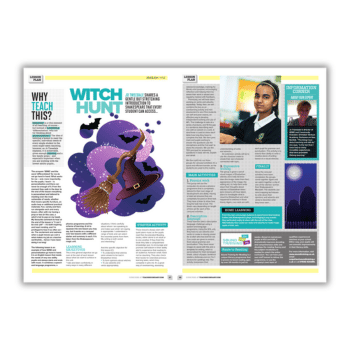How Accessible is your Information?

Your premises might be fully accessible and your curriculum inclusive to all – but can you be certain that everyone’s getting the message?

When someone has a learning disability, it can affect every part of their life and prevent them from getting the information they need to make informed choices.
Broadly speaking, ‘accessible information’ refers to information which people can understand, but that can mean different things to different individuals.
For some, it might mean presenting information in large print or Braille; others might consider it to be information translated into their first language.
By law, pupils with disabilities, parents and carers have the right to be treated equally, and to have information made accessible to them.
There are three important areas in which schools have to ensure compliance under the Equality Act 2010 – ‘access to the building’, ‘access to the curriculum’ and ‘access to written information’.
Substantial disadvantage
‘Information’ in this context should take account of pupils’ disabilities and the formats preferred by both pupils and parents, and be made available within a reasonable time frame.
Examples of this might include handouts, textbooks and information about school events.
The basic requirement on schools will be to let pupils and parents/carers know that written information and other forms of communication will be made accessible to them upon request.
You could potentially include a note on your website or promotional materials, create a sign or post a notice on a bulletin board.
If a parent or carer with a disability asks for accessible information, work with them to identify how their needs can be met.
You don’t necessarily need have to have the relevant accessible formats immediately to hand, but you will need to provide the information required in a timely manner.
For example, a visually impaired pupil who can only see material in 16pt font size or larger will be at a substantial disadvantage compared to their non-disabled peers if materials are only provided to them in smaller print.
To use a different example, consider the disabled pupil who has dyslexia and finds it very difficult to read text typed on white paper. In this case, the school can provide the pupil with handouts printed on yellow paper.
In another instance, a disabled pupil with dyslexia finds it difficult to read text on all types of paper without the aid of a plastic overlay sheet – the reasonable adjustment here would be to simply provide that pupil with a plastic overlay sheet for them to use in all lessons.
Specialist provision
By way of a counter-example, an independent school provides overlay sheets to a pupil with dyslexia to use when reading text, and supports this with weekly sessions provided by a specialist teacher.
If the school were to then add the cost of these adjustments to the pupil’s school fees, that would amount to discrimination.
Depending on the circumstances involved, schools may find themselves needing to provide disabled pupils, parents or carers with specialist equipment such as screen readers, adapted keyboards or accessible computer software.
The pupils’ needs may extend to specialist service provision, such as sign language interpretation, lip-reading or deaf-blind communication, and potentially also entail fitting an induction loop, infrared broadcast system or an audiovisual fire alarm system.
Accessibility is ultimately more important than the way your documents look. You could spend considerable amounts on making them look impressive, but if people can’t understand what they say, that’s money wasted. Take time and care when making your information accessible.
Lesley Mifsud is head access auditor and CEO at EA Audits; visit ea-audits.com or follow @eaaudits.











